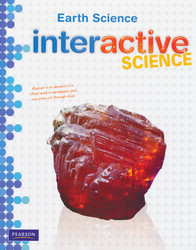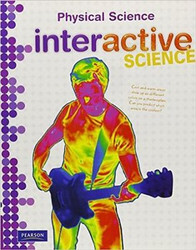Interactive Science: Life Science Grades 6-8 Student Workbook

- Detailed lesson plans make instruction easy
- In-depth, hands-on activities throughout each lesson engage your child
- "Got It?" checkpoints ensure your child understands the material
- Understanding By Design framework leads students to a deeper understanding of science concepts
Interactive Science: Life Science for Grades 6,7 or 8 is a more challenging curriculum than the previous Grade K-5 levels, as your child has, by now, a strong foundational knowledge of Science Engineering and Technology, Life Science, Earth Science and Physical Science. These four Science topics are included in all Interactive Science programs. In fact, Interactive Science is broken down into units that mirrors the four key areas of Science education.
Because your child is at the middle school level, he or she needs a challenging Science program. Interactive Science: Grade 7 simultaneously reiterates important foundational information and helps your child progress. For instance, by the time your child completes Grade 7, he or she should be able to:
- Research a problem by designing and conducting an experiment using the Scientific Method.
- Use statistics such as mean, median and mode to interpret findings.
- Write a lab report after conducting an experiment.
- Understand the effects of friction on an object.
- Explain how the earth was formed.
- Understand the laws of motion, speed, force and the transferring of energy.
- Explain orbit, including the moon’s orbit around Earth and Earth’s orbit around the sun.
- Understand the connection between time and Earth's orbit.
- Glean information on ecosystems by observing aquariums and terrariums.
The consumable, interactive Student Worktext: is the center of instruction. Overarching, weekly chapters are broken down into individual daily lessons, and include 3-6 lessons with inquiry labs, and an end-of-chapter study guide, review, and assessment section; a "science matters" feature at the very end looks at the application of science to real-world issues. Chapters cover the nature of science, solving problems, objects, matter, motion, the earth, the sky, living things, nonliving things, plants, animals, and more.
Chapters begin with a "big question" that frames the lessons to follow, and an example with prediction question. Lessons include a brief background check with highlighted and defined terms; a longer lesson with integrated questions; lesson questions that link back to the big question; "lab zone" hands-on questions; and "got it?" questions that provide an opportunity to prove that the main point has been learned, or for students to raise where they're still confused. A wide variety of questions pop up throughout, including "do the math," "what do you know?," "apply it!" and other forms of assessment, practice, and review.
The Teacher's Edition: is provided in an eText version through the access card included in the bundle. The eText provides access to all the materials teachers need, organized by the table of contents. Click to see the student chapters and expand the folder to get to the instructional materials. Objectives, notes on how the nature of inquiry fits into the books' lesson and activities, and preparation guidelines are provided. Lesson information, teaching tips, and answers are presented around the reduced student text pages. The lesson planner that provides pacing and notes for the "path of inquiry," through the "digital path" is not included, nor is it sold for individual use by Pearson at this time. This teacher's edition e-Text is not printable.
Teacher/Parent Guide: This guide walks you through the program highlighting the main elements of the student and teacher materials and provides guidance on setting up your lesson plan, pacing, and adapting the curriculum to fit your family.
Please Note: The student workbook refers to videos and online components that are part of the "digital path," a student science website. Pearson does not include a student access code for this website and its content with this item, nor is it sold for individual use at this time. A teacher's Edition e-Text and student activities book/lab manual are available for purchase to complement this item, but are sold separatley.
Also, please be aware that this textbook teaches from an evolutionary perspective.
Product Information
| Format: Other Vendor: Pearson Learning Publication Date: 2013 |
ISBN: 0133209229 ISBN-13: 9780133209228 |




































